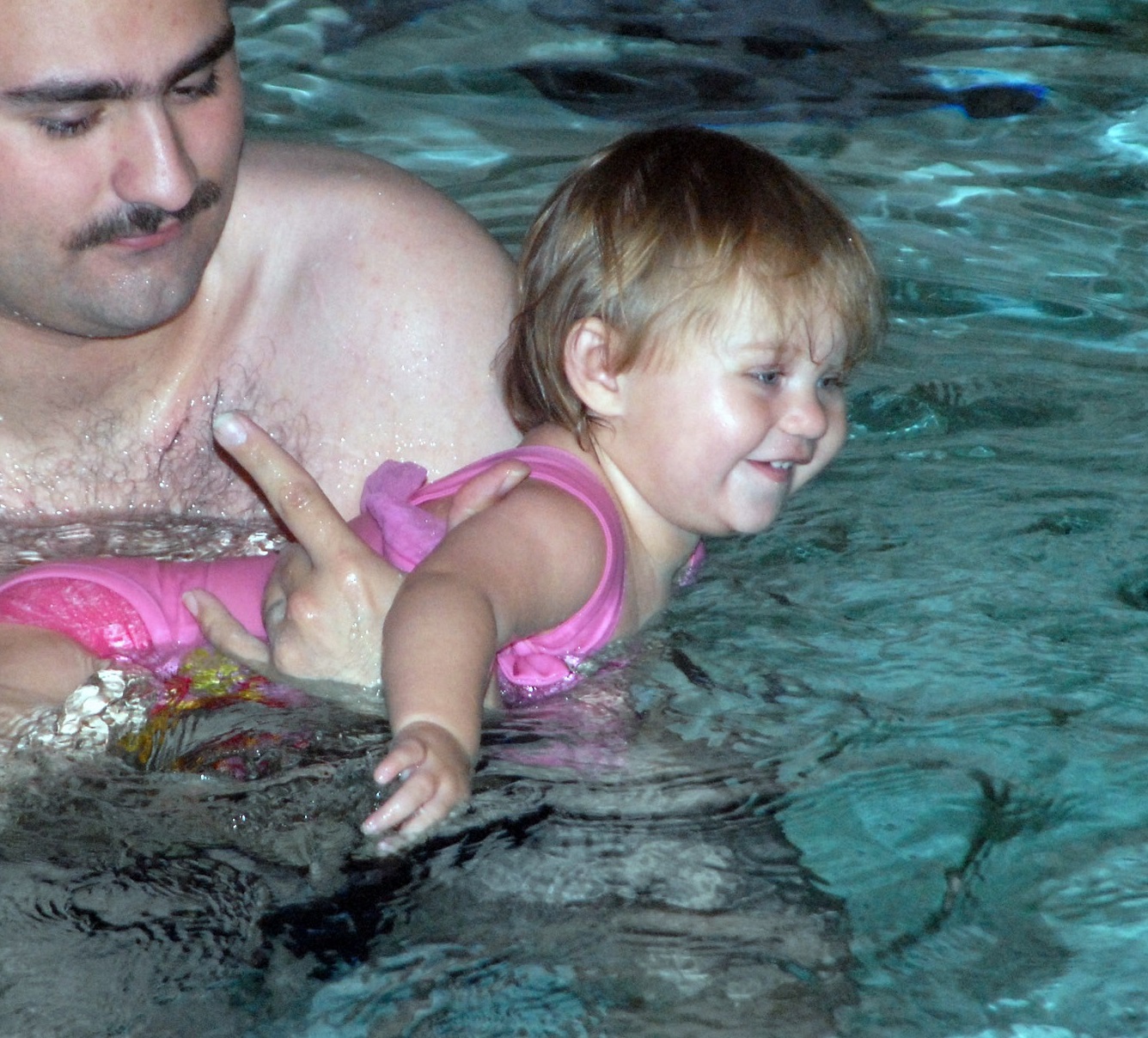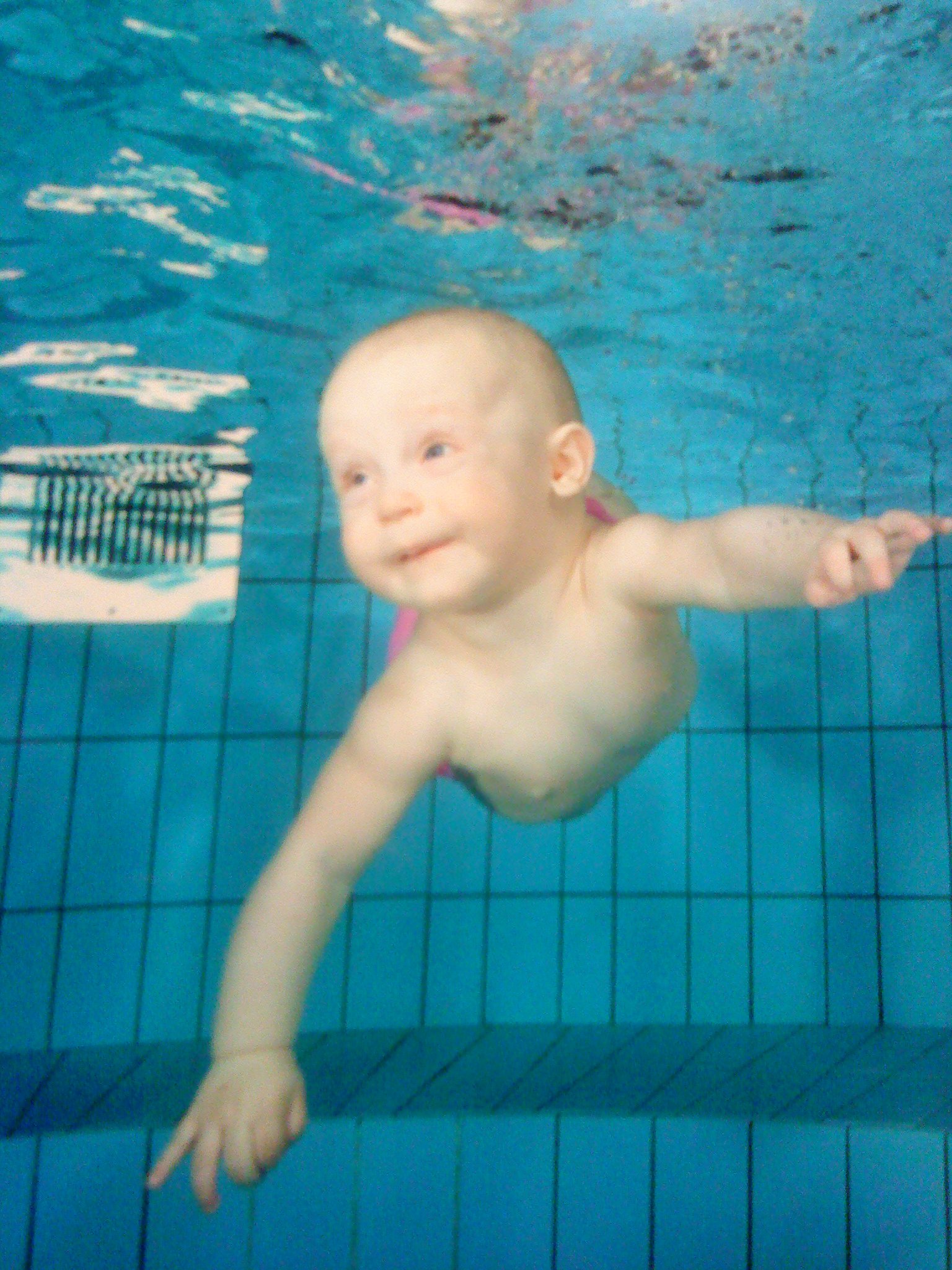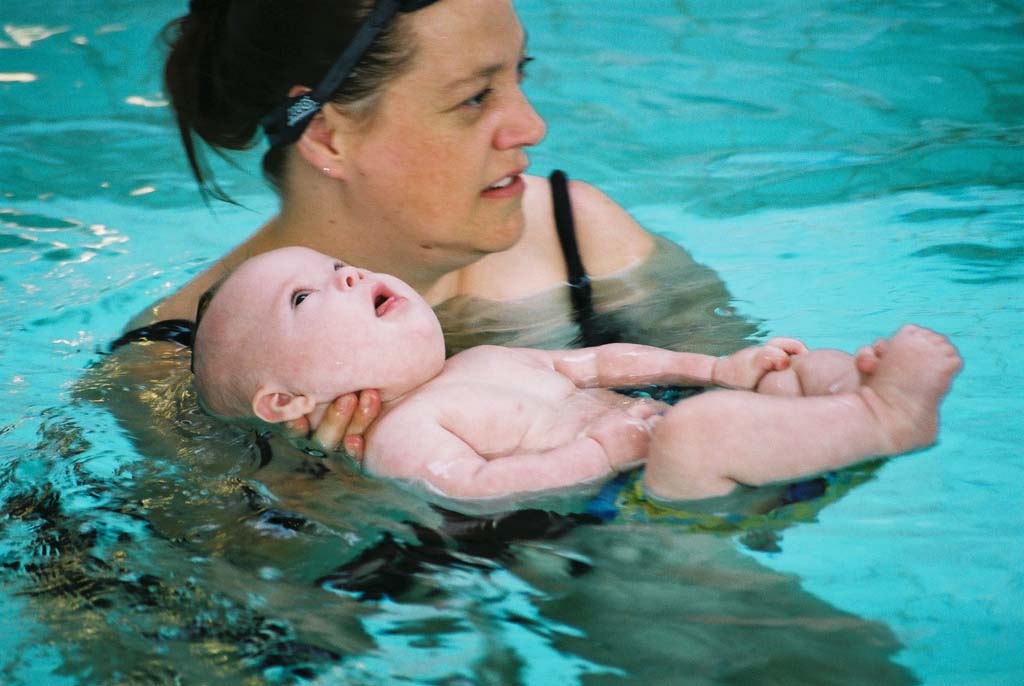Infant swimming on:
[Wikipedia]
[Google]
[Amazon]

 Infant swimming is the phenomenon of human
Infant swimming is the phenomenon of human
Sample size: 1,316. Drowning: 29.9%, motor vehicle traffic accidents: 24.8%, suffocation: 12.2%, fire/burns: 9.8%, etc. National Center for Health Statistics (NCHS),
 Traditionally,
Traditionally,

 Infant swimming is the phenomenon of human
Infant swimming is the phenomenon of human babies
An infant or baby is the very young offspring of human beings. ''Infant'' (from the Latin word ''infans'', meaning 'unable to speak' or 'speechless') is a formal or specialised synonym for the common term ''baby''. The terms may also be used to ...
and toddlers
A toddler is a child approximately 12 to 36 months old, though definitions vary. The toddler years are a time of great cognitive, emotional and social development. The word is derived from "to toddle", which means to walk unsteadily, like a child ...
reflexively moving themselves through water and changing their rate of respiration and heart rate in response to being submerged. The slowing of heart rate and breathing is called the bradycardic response. It is not true that babies are born with the ability to swim, though they have primitive reflexes
Primitive reflexes are reflex actions originating in the central nervous system that are exhibited by normal infants, but not neurologically intact adults, in response to particular stimuli. These reflexes are suppressed by the development of the ...
that make it look like they are. Babies are not old enough to hold their breath intentionally or strong enough to keep their head above water, and cannot swim unassisted.
Most infants, though not all, will reflexively hold their breath when submerged to protect their airway and are able to survive immersion in water for short periods of time. Infants can also be taken to swimming lessons
Swimming lessons are the process of learning to swim. In most countries there is a definition of a number of swimming levels that are reached in the process of the curriculum. The respective certificates of swimming tests are required for furt ...
. Although this may be done to reduce their risk of drowning
Drowning is a type of suffocation induced by the submersion of the mouth and nose in a liquid. Most instances of fatal drowning occur alone or in situations where others present are either unaware of the victim's situation or unable to offer as ...
, the effects on drowning risk are not reliable.
Babies can imitate swimming motions and reflexes, but are not yet physically capable of swimming.
A submersion of the head may last only a few seconds. A German physician
A physician (American English), medical practitioner (Commonwealth English), medical doctor, or simply doctor, is a health professional who practices medicine, which is concerned with promoting, maintaining or restoring health through th ...
pointed out the health risks of infant diving and the sometimes serious consequences as early as 1986, writing that since the introduction of baby swimming in Germany, several hundred infants had died from brain complications as a result of sinusitis
Sinusitis, also known as rhinosinusitis, is inflammation of the mucous membranes that line the sinuses resulting in symptoms that may include thick nasal mucus, a plugged nose, and facial pain. Other signs and symptoms may include fever, head ...
and otitis that occurred after diving. Pediatricians also reported cases of cardiac arrest
Cardiac arrest is when the heart suddenly and unexpectedly stops beating. It is a medical emergency that, without immediate medical intervention, will result in sudden cardiac death within minutes. Cardiopulmonary resuscitation (CPR) and poss ...
or respiratory failure
Respiratory failure results from inadequate gas exchange by the respiratory system, meaning that the arterial oxygen, carbon dioxide, or both cannot be kept at normal levels. A drop in the oxygen carried in the blood is known as hypoxemia; a rise ...
.
Infant swimming or diving reflex
Most human babies demonstrate an innateswimming
Swimming is the self-propulsion of a person through water, or other liquid, usually for recreation, sport, exercise, or survival. Locomotion is achieved through coordinated movement of the limbs and the body to achieve hydrodynamic thrust that r ...
or diving reflex
The diving reflex, also known as the diving response and mammalian diving reflex, is a set of physiological responses to immersion that overrides the basic homeostatic reflexes, and is found in all air-breathing vertebrates studied to date. It o ...
from birth until the age of approximately six months, which are part of a wider range of primitive reflexes
Primitive reflexes are reflex actions originating in the central nervous system that are exhibited by normal infants, but not neurologically intact adults, in response to particular stimuli. These reflexes are suppressed by the development of the ...
found in infants and babies, but not children, adolescents and adults. Other mammals also demonstrate this phenomenon (see mammalian diving reflex
The diving reflex, also known as the diving response and mammalian diving reflex, is a set of physiological responses to immersion that overrides the basic homeostatic reflexes, and is found in all air-breathing vertebrates studied to date. It o ...
). This reflex involves apnea (loss of drive to breathe), slowed heart rate
Heart rate (or pulse rate) is the frequency of the heartbeat measured by the number of contractions (beats) of the heart per minute (bpm). The heart rate can vary according to the body's physical needs, including the need to absorb oxygen and excr ...
(reflex bradycardia
Reflex bradycardia is a bradycardia (decrease in heart rate) in response to the baroreceptor reflex, one of the body's homeostatic mechanisms for preventing abnormal increases in blood pressure. In the presence of high mean arterial pressure, t ...
), and reduced blood circulation to the extremities such as fingers and toes (peripheral vasoconstriction
Vasoconstriction is the narrowing of the blood vessels resulting from contraction of the muscular wall of the vessels, in particular the large arteries and small arterioles. The process is the opposite of vasodilation, the widening of blood vess ...
). During the diving reflex, the infant's heart rate decreases by an average of 20%. The glottis is spontaneously sealed off and the water entering the upper respiratory tract
The respiratory tract is the subdivision of the respiratory system involved with the process of respiration in mammals. The respiratory tract is lined with respiratory epithelium as respiratory mucosa.
Air is breathed in through the nose to t ...
is diverted down the esophagus into the stomach.
The diving response has been shown to have an oxygen
Oxygen is the chemical element with the symbol O and atomic number 8. It is a member of the chalcogen group in the periodic table, a highly reactive nonmetal, and an oxidizing agent that readily forms oxides with most elements as ...
-conserving effect, both during movement and at rest. Oxygen is saved for the heart and the brain, slowing the onset of serious hypoxic
Hypoxia means a lower than normal level of oxygen, and may refer to:
Reduced or insufficient oxygen
* Hypoxia (environmental), abnormally low oxygen content of the specific environment
* Hypoxia (medical), abnormally low level of oxygen in the t ...
damage. The diving response can therefore be regarded as an important defence mechanism for the body.
Drowning risk
Drowning
Drowning is a type of suffocation induced by the submersion of the mouth and nose in a liquid. Most instances of fatal drowning occur alone or in situations where others present are either unaware of the victim's situation or unable to offer as ...
is a leading cause of unintentional injury and death worldwide, and the highest rates are among children. Overall, drowning is the most common fatal injury among children aged 1–4 years in the USA,Percentage chart of the causes of death by unintentional injury, ages 1–4 (all races, both sexes), in 2013.Sample size: 1,316. Drowning: 29.9%, motor vehicle traffic accidents: 24.8%, suffocation: 12.2%, fire/burns: 9.8%, etc. National Center for Health Statistics (NCHS),
National Vital Statistics System The National Vital Statistics System (NVSS) is an inter-governmental system of sharing data on the vital statistics of the population of the United States. It involves coordination between the different state health departments of the US states and ...
. and is the second highest cause of death altogether in that age range, after congenital defects.
A Centers for Disease Control and Prevention
The Centers for Disease Control and Prevention (CDC) is the national public health agency of the United States. It is a United States federal agency, under the Department of Health and Human Services, and is headquartered in Atlanta, Georgi ...
study in 2012 of United States data from 2005–2009 indicated that each year an average of 513 children aged 0–4 years were victims of fatal drowning and a further 3,057 of that age range were treated in U.S. hospital emergency departments for non-fatal drowning. Of all the age groups, children aged 0–4 years had the highest death rate and also non-fatal injury rate. In 2013, among children 1 to 4 years old who died from an unintentional injury
An accident is an unintended, normally unwanted event that was not directly caused by humans. The term ''accident'' implies that nobody should be blamed, but the event may have been caused by unrecognized or unaddressed risks. Most researche ...
, almost 30% died from drowning. These children most commonly drowned in swimming pools, often at their own homes.
Swimming lessons for infants
 Traditionally,
Traditionally, swimming lessons
Swimming lessons are the process of learning to swim. In most countries there is a definition of a number of swimming levels that are reached in the process of the curriculum. The respective certificates of swimming tests are required for furt ...
started at age four years or later, as children under four were not considered developmentally ready. However, swimming lessons for infants have become more common. The Australian Swimming Coaches and Teachers Association recommends that infants can start a formal program of swimming lessons at four months of age and many accredited swimming schools offer classes for very young children, especially towards the beginning of the swimming season in October. In the US, the YMCA
YMCA, sometimes regionally called the Y, is a worldwide youth organization based in Geneva, Switzerland, with more than 64 million beneficiaries in 120 countries. It was founded on 6 June 1844 by George Williams (philanthropist), Georg ...
and American Red Cross offer swim classes. A baby has to be able to hold his or her head up (usually at 3 to 4 months), to be ready for swimming lessons.
Children can be taught, through a series of "prompts and procedures," to float on their backs to breathe, and then to flip over and swim toward a wall or other safe area. Children are essentially taught to swim, flip over and float, then flip over and swim again. Thus, the method is called "swim, float, swim."
Pros and cons of infant swimming lessons
In a 2009 retrospective case-control study that involved significant potential sources of bias, participation in formal swimming lessons was associated with an 88% reduction in the risk of drowning in 1- to 4-year-old children, although the authors of the study found the conclusion imprecise. Another study showed that infant swimming lessons may improve motor skills, but the number of study subjects was too low to be conclusive. There may be a link between infant swimming andrhinovirus
The rhinovirus (from the grc, ῥίς, rhis "nose", , romanized: "of the nose", and the la, vīrus) is the most common viral infectious agent in humans and is the predominant cause of the common cold. Rhinovirus infection proliferates in tem ...
-induced wheezing
A wheeze is a continuous, coarse, whistling sound produced in the respiratory airways during breathing. For wheezes to occur, some part of the respiratory tree must be narrowed or obstructed (for example narrowing of the lower respiratory tract ...
illnesses.
Others have indicated concerns that the lessons might be traumatic, that the parents will have a false sense of security and not supervise young children adequately around pools, or that the infant could experience hypothermia
Hypothermia is defined as a body core temperature below in humans. Symptoms depend on the temperature. In mild hypothermia, there is shivering and mental confusion. In moderate hypothermia, shivering stops and confusion increases. In severe ...
, suffer from water intoxication
Water intoxication, also known as water poisoning, hyperhydration, overhydration, or water toxemia, is a potentially fatal disturbance in brain functions that results when the normal balance of electrolytes in the body is pushed outside safe li ...
after swallowing water, or develop gastrointestinal
The gastrointestinal tract (GI tract, digestive tract, alimentary canal) is the tract or passageway of the digestive system that leads from the mouth to the anus. The GI tract contains all the major organs of the digestive system, in humans and ...
or skin infections.
Professional positions
In 2010, the American Academy of Pediatrics reversed its previous position in which it had disapproved of lessons before age 4, indicating that the evidence no longer supported an advisory against early swimming lessons. However, the AAP stated that it found the evidence at that time insufficient to support a recommendation that all 1- to 4-year-old children receive swimming lessons. The AAP further stated that in spite of the popularity of swimming lessons for infants under 12 months of age and anecdotal evidence of infants having saved themselves, no scientific study had clearly demonstrated the safety and efficacy of training programs for infants that young. The AAP indicated its position that the possible benefit of early swimming instruction must be weighed against the potential risks (e.g., hypothermia,hyponatremia
Hyponatremia or hyponatraemia is a low concentration of sodium in the blood. It is generally defined as a sodium concentration of less than 135 mmol/L (135 mEq/L), with severe hyponatremia being below 120 mEq/L. Symptoms can be a ...
, infectious
An infection is the invasion of tissues by pathogens, their multiplication, and the reaction of host tissues to the infectious agent and the toxins they produce. An infectious disease, also known as a transmissible disease or communicable dis ...
illness, and lung damage from pool chemicals
A chemical substance is a form of matter having constant chemical composition and characteristic properties. Some references add that chemical substance cannot be separated into its constituent elements by physical separation methods, i.e., wit ...
).
The American Centers for Disease Control and Prevention
The Centers for Disease Control and Prevention (CDC) is the national public health agency of the United States. It is a United States federal agency, under the Department of Health and Human Services, and is headquartered in Atlanta, Georgi ...
recommends swimming lessons for children from 1–4, along with other precautionary measures to prevent drowning.
The Canadian Pediatric Society takes a middle-of-the-road approach. While it does not advise against swimming lessons for infants and toddlers, it advises that they can not be considered a reliable prevention for drowning
Drowning is a type of suffocation induced by the submersion of the mouth and nose in a liquid. Most instances of fatal drowning occur alone or in situations where others present are either unaware of the victim's situation or unable to offer as ...
, and that lessons for children less than 4 years should focus on building confidence in the water and teaching parents and children water safety skills. They also recommend, for all children less than 4 years, constant arms-length supervision for toddlers
A toddler is a child approximately 12 to 36 months old, though definitions vary. The toddler years are a time of great cognitive, emotional and social development. The word is derived from "to toddle", which means to walk unsteadily, like a child ...
near any body of water (including bathtubs) and that infants be held at all times.
References
External links
* * * {{Authority controlSwimming
Swimming is the self-propulsion of a person through water, or other liquid, usually for recreation, sport, exercise, or survival. Locomotion is achieved through coordinated movement of the limbs and the body to achieve hydrodynamic thrust that r ...
Swimming